2050 Sustainable Materials Series: Cordwood
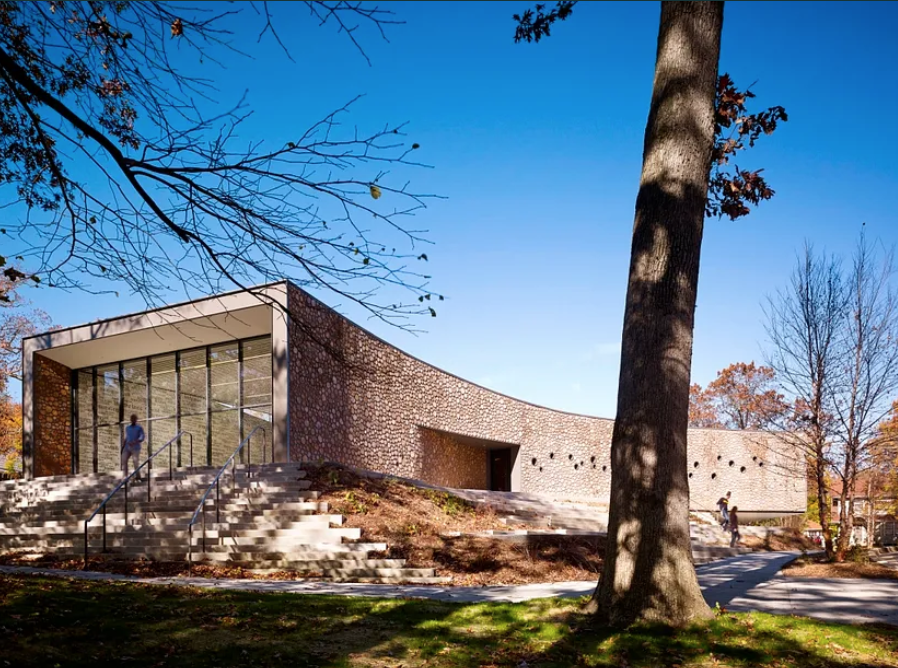
Kalamazoo College, Michigan — Photo: Steve Hall/Hedrich Blessing, courtesy of Studio Gang Architects
Cordwood homes, or even cordwood buildings at larger scale are outstanding green building solutions that are aesthetically unique, while they also look pretty damn cool!
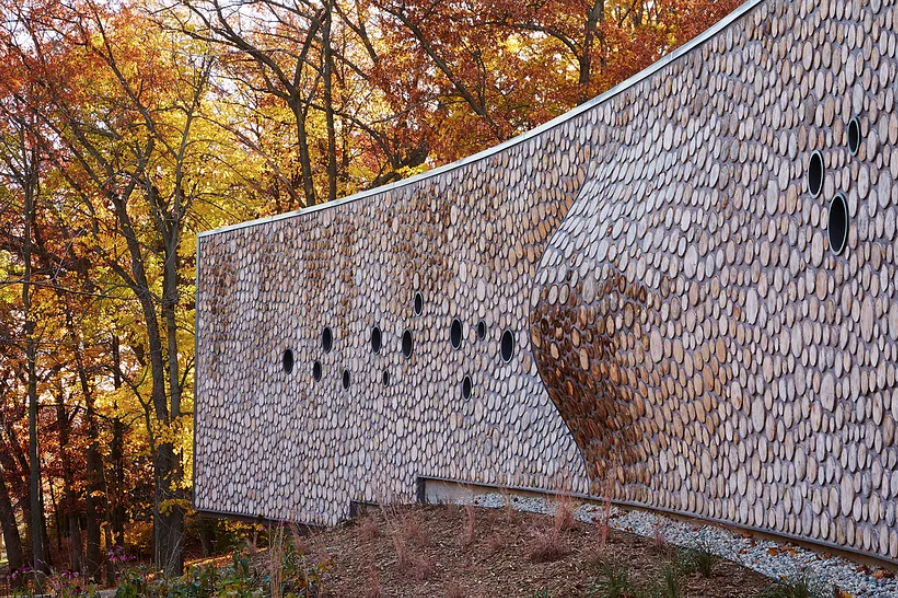
Photo: Steve Hall/Hedrich Blessing, courtesy of Studio Gang Architects
Cordwood masonry is a term used for a natural building method that uses cordwood or short pieces of debarked tree logs. The wood is laid up crosswise, bound with mortar mixtures creating an unusual, but functional, durable, and attractive wall design. Such eco-homes and buildings are charming and have a distinctive, especially unique visual appeal.
The ease of sourcing the necessary materials, simple construction process, as well as design flexibility offers significant interior space maximisation. This is achieved through curved wall layouts making cordwood homes ideal for low cost, environmentally sound and space-efficient building solutions.
 Most cordwood homes have been successfully delivered at such low total cost, that the owners did not require a mortgage.
Most cordwood homes have been successfully delivered at such low total cost, that the owners did not require a mortgage.
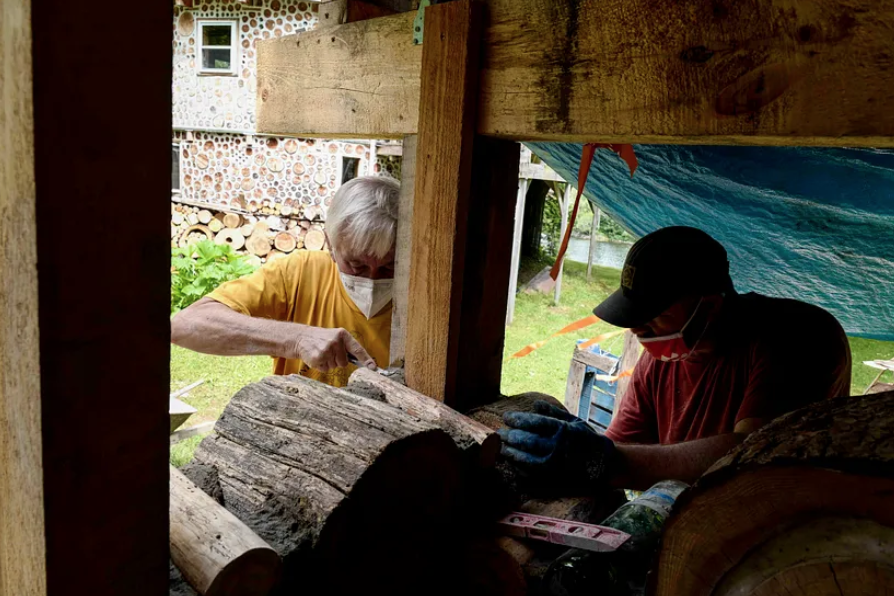
Source: RESET Embodied Carbon and Circularity in Office Interiors: Part 1
How about the cordwood wall performance?
Cordwood walls are 12 to 24 inches thick, while in colder regions they can even reach a thickness of up to 36 inches. In standard specifications, 40% to 60% of the cordwood wall design is simply wood; the rest is a mortar mix and insulating fill containing sand, sawdust and non-agricultural lime. This makes the wall more flexible, breathable, and self-healing because it takes longer to completely set than cement.
The walls are warm and beautiful, showing off exposed sections of logs — further adding to the aesthetics of funky exterior wall designs and home interiors. However, this is quite often dependant on each builder’s style and taste.
The construction method involves stacking up short, round lengths of wood to form a wall. Using what would normally be kept aside for firewood, cordwood looks like a stack of wood you’d probably have stored by your fireplace, with the ends of each log left exposed in an uneven alignment. The cordwood is held together with mortar, creating a wall with both high insulation properties but also high thermal mass.
Similarly to straw-bale wall construction, many building authorities require a post and beam or similar supporting structure that utilises cordwood as an infill.
 However, a standard cordwood wall can easily create a solid structure capable of self-supporting a considerable load.
However, a standard cordwood wall can easily create a solid structure capable of self-supporting a considerable load.
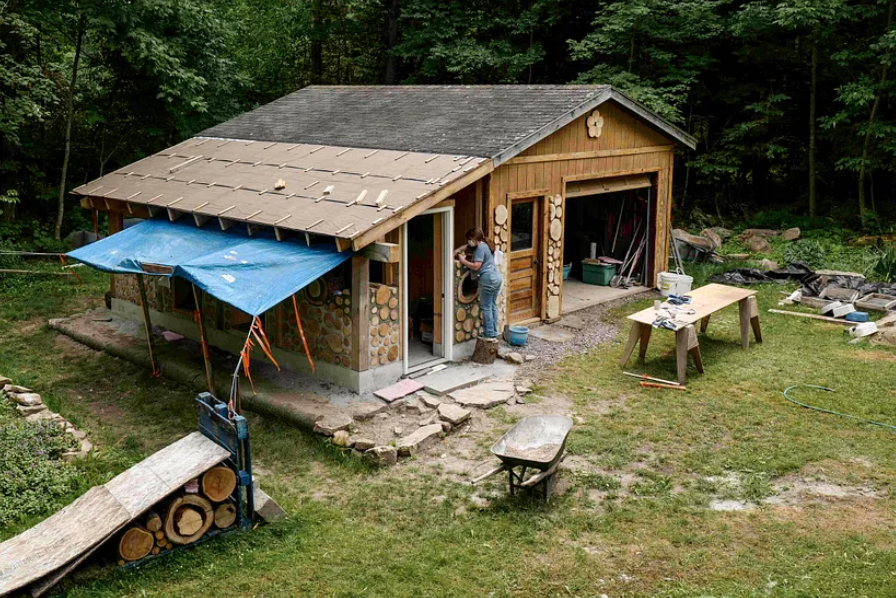
Pros and Cons of cordwood construction: Why build with cordwood masonry?
- Embodied Energy:
Cordwood buildings typically have significantly lower embodied energy than other construction solutions, provided the wood used is local, or better yet, sourced on-site. When considering the fact that the wood needed for these walls requires very little engineering work prior to installation, there is minimal waste or energy consumed processing it.
However, the inherent energy contained in the wood through the sourcing process (cutting the trees, logs etc), combined with any distance that the wood must travel to the site, can impact its embodied carbon drastically.
- Operational Energy Efficiency
The thermal performance of cordwood walls can achieve excellent performance, depending on the thickness of the walls and the type of insulation being used. The thickness of cordwood walls can be adjusted for specific climates relatively easily.
However, the wood often shrinks within the mortar, creating cracks that can significantly reduce the R-value (or thermal performance) of the wall. Therefore, repairs to seal cracks must be made to retain the targeted insulating factor.
- Longevity:
Even though the longevity of cordwood buildings could be a matter of dispute, it can be retained if appropriate measures are in place. Proponents say most wood shrinkage and rot can be avoided by carefully choosing well-seasoned wood and creating overhangs to protect the walls. Detractors claim that even with these considerations, the wood in the walls often rots, shrinks, and can be severely damaged by insects. However, the risk of rot or insect damage can be avoided by ensuring the following:
- Use dried, debarked softwood logs such as cedar
- Use as slow slow-setting mortar mix as possible
- Keep the logs from touching within the walls by creating wide mortar joints
Both sides agree that some shrinkage of your cordwood walls will occur, so it is important to know how to address these problems as they appear.
- Cost:
Typically, there is significantly less upfront out-of-pocket cost associated with cordwood construction in comparison to a standard concrete / stick frame house of similar size.
The simplicity associated with the construction method means that in many cases, labour is carried out primarily by the owner, meaning that it does not require highly skilled or trained builders to execute its construction.
- Ground conditions:
Construction plans for proposed cordwood construction buildings are subject to the building inspector’s approval. Prior to construction, soil conditions on the site must be assessed and approved to support heavy cordwood masonry walls.
This is not typically an issue, but a consideration that must be made before designing or procuring any of the materials.
Panchami Pandharikar, Environmental Designer
2050 Materials Platform — New tool release!
2050 Materials has recently secured partnerships with certification bodies promoting sustainable forestry practices (PEFC & FSC). You can now find certified suppliers and manufacturers in the 2050 Materials database.
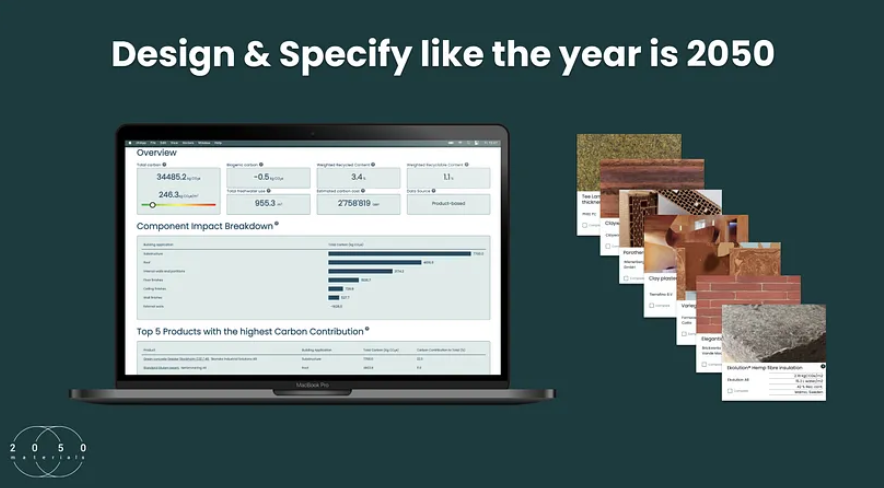
If you are considering non-conventional construction methods for your project aiming to utilise natural materials, you should absolutely get in touch and request access to our new “Projects” simplified LCA tool.
The tool will enable you to create any building or buildup configuration — from raw materials to ready-to-source products — and help you demonstrate how your solution can outperform the conventional.
Related articles

Climate-Resilient Materials for the Built Environment: A Data-Centred Prime
As climate volatility intensifies, resilience metrics are fast becoming as critical as carbon data in material selection. This article outlines why adaptation is now a design imperative, how materials can be evaluated through a systems lens, and what KPIs project teams should demand. From self-healing concrete to fire-rated façades, we present a structured taxonomy of resilient materials, explain how to embed this intelligence into digital design workflows, and propose next steps for specification, benchmarking, and procurement.
Read more
The Most Interesting Low Carbon Products in Office Design
In this article and collection, we highlight 11 outstanding products that contribute to a lower carbon footprint in office design.
Read more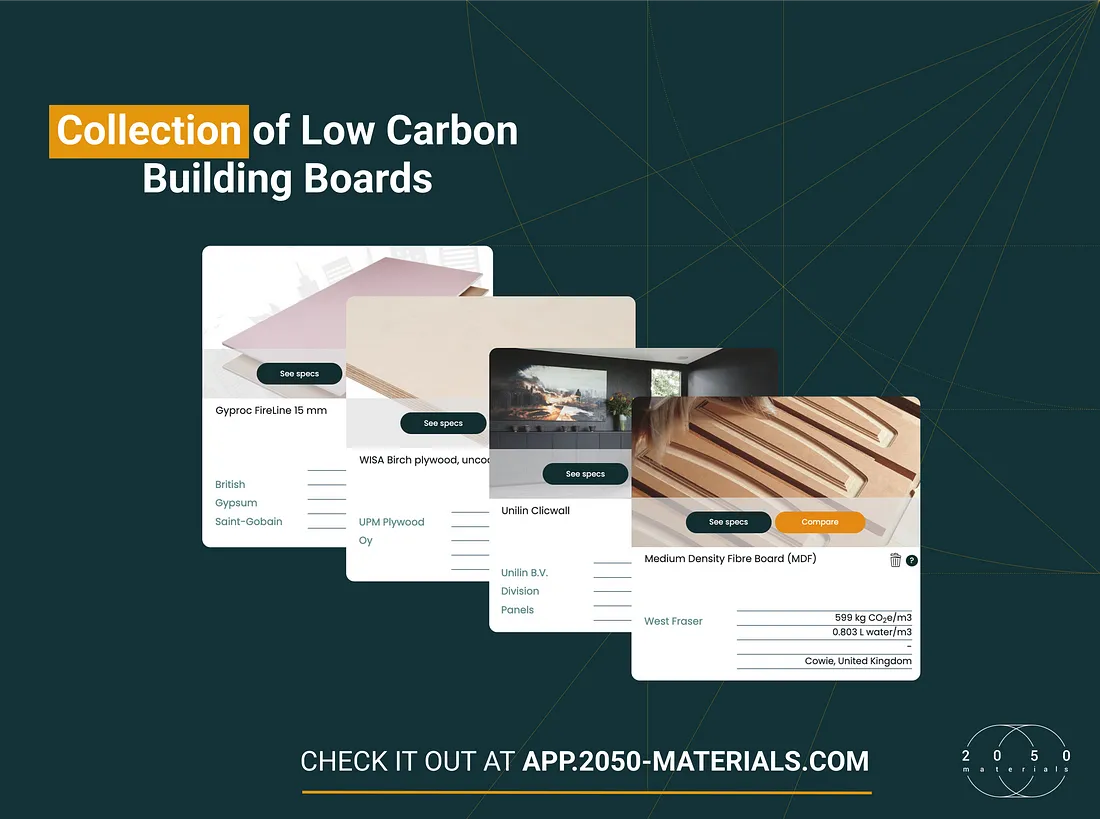
Top Low Carbon Building Boards: Performance, Benefits, and Use Cases
The building boards highlighted in this article and collection showcase low-carbon innovation in modern construction.
Read more